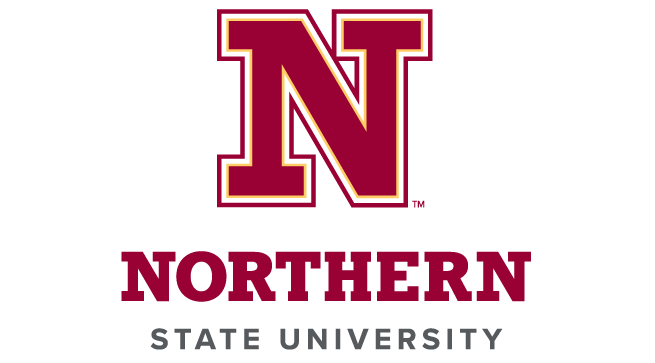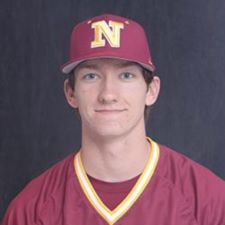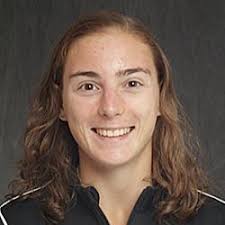About the lab

In August 2023, the Nora Staeel Evertt Human Performance Lab underwent expansion, funded by a $200,000 SDBOR Research and Development grant. This grant facilitated the construction of a state-of-the-art biomechanics lab and the enhancement of equipment in the existing human performance lab.
The labs currently serve as crucial research facilities for NSU faculty and students, aligning with the mission to enhance human performance and reduce injury risks in athletes. Moreover, sports science students benefit significantly by gaining hands-on experience with the lab's equipment as part of their curriculum.
This lab expansion holds paramount importance for the university, sports science students, and the community. Given the rapid growth of the sports science field, practical lab experience is often a prerequisite for pursuing a career in this field. The upgraded equipment now enables students to acquire essential hands-on experience, making them eligible for competitive job placements that were previously out of reach. Notably, Northern stands out as one of the only Division 2 universities in the state equipped with a human performance and biomechanics lab of such high caliber, placing our program in direct competition with Division 1 universities at a more affordable cost.
About the Director
- Jessica Downs-Talmage, Ph.D., serves as the Director of the Human Performance and Biomechanics Labs. She earned her Master's and Ph.D. degrees in Sports Biomechanics from Auburn University. Dr. Talmage specializes in research related to performance enhancement and injury prevention, with a specific focus on baseball and softball athletes.
- Her active involvement in the field is reflected in her role on the board of directors for the American Baseball Biomechanics Society (ABBS) and as a member of the inaugural board of directors for the Softball Pitching Advisory Committee (SPAC).
- Dr. Talmage's contributions to the scientific community are substantial, with over 20 research papers published in highly regarded journals and more than 40 conference presentations. For those interested in exploring her research further, her works can be accessed through her Google Scholar page.
“ I became interested in baseball biomechanics because I saw it as an opportunity to combine multiple areas of interest without having to pick a specific path. Additionally, I get the opportunity to work with athletes on a daily basis and collaborate with doctors, therapists, trainers, and strength and conditioning staff to solve problems and help athletes achieve their maximum potential ”
— Dr. Talmage
Featured Students
Graduate Assistantships
The Human Performance and Biomechanics Lab has one graduate assistantship (GA) available for a student enrolled in the Performance and Leadership master's program.
- The selected GA will collaborate closely with the director to facilitate and conduct diverse research projects.
- They will have the opportunity to mentor undergraduate students, gaining valuable experience in the process.
While there is only one official GA position available, we actively seek graduate students who are willing to volunteer and acquire lab experience. If you are interested in learning more about this opportunity, please contact the lab director for more information.
Collaboration Partners
Sanford Health Innovation Center
The partnership involves collaborating closely with a local foot surgeon who has designed a cutting-edge device tailored to amplify intrinsic foot strength. Together, we are conducting comprehensive product testing, delving into various aspects such as functionality, efficacy, and user experience. This effort is also in collaboration with the University of South Dakota. Through rigorous testing and refinement, we aim to ensure that this device meets the highest standards of quality and performance, ultimately offering individuals an alternative solution for enhancing their foot strength and overall athletic performance.
Northern State University Football and Women’s Soccer Team
Beginning fall 23 the football and soccer team established a collaboration with the Sports Sciences department, working alongside the strength and conditioning staff to oversee athlete workload. This collaboration involved athletes utilizing the Polar Team Pro sensor during both practices and games. Real-time workload data for each session was monitored by the strength and conditioning staff, while the Director of the lab generated daily and monthly reports to be shared with coaches and the strength staff. A sample report is available for reference.
Northern State University Softball Team
The NSU softball team comes into the human performance lab every year for testing at 4 various time points throughout the year. Testing consists of bilateral hip and shoulder internal and external range of motion, body composition scan, quadricep and hamstring strength, and internal and external rotation shoulder strength. These variables are tracked longitudinally and reported back to the coaches and training staff.
Biomechanics career paths
Biomechanics Researcher
Conduct research in academia, government institutions (Walter Reed Medical Center, Military) or private organizations (Professional sports teams, Nike, Under Armor, etc) to advance the understanding of biomechanical principles and their applications in various fields.
Clinical Biomechanist
Work in healthcare settings, collaborating with healthcare professionals to assess and improve movement patterns in patients. This can involve analyzing gait, posture, and biomechanical aspects related to injuries or medical conditions.
Orthopedic Biomechanist
Collaborate with orthopedic surgeons to analyze and optimize joint function, develop orthopedic devices, and contribute to the design of implants or prosthetics.
Sports Biomechanist
Assist athletes in improving performance and preventing injuries by analyzing their movements. Work with sports teams, coaches, and athletes to optimize training programs based on biomechanical assessments.
Athletic Trainer
Work with athletes to prevent, diagnose, and treat injuries. Athletic trainers often collaborate with healthcare professionals to optimize performance and recovery.
Exercise Physiologist
Design and implement exercise programs for individuals with chronic conditions or athletes to enhance their physical fitness and overall health.
Strength and Conditioning Coach
Develop and implement strength training and conditioning programs for athletes to improve their performance and reduce the risk of injuries.
Physical Therapist
Help individuals recover from injuries or surgeries through therapeutic exercises and rehabilitation programs.
Biomechanics Lab
Equipment list
Human Performance Lab
- 40 Polar Team Pro heart rate/GPS sensors (New Fall 23)
- Biodex System 4 Pro (New Fall 23)
- Biodex System 3 Pro with upgraded system 4 pro software (New Fall 23)
- Metabolic Cart
- Monarch LC6 NOVO Electronically Controlled Cyle Ergometer (New Fall 23)
- Inbody 570 Body Composition Analyzer
- 8 Delsys Trigno Avanti Wireless Electromyography sensors
- 2 Driveline Pulse Sensors
- 4 Functional Movement Screen (FMS) test kits
- JumpMat
- Grip strength Dynamometer
- 2 digital inclinometers
- 20 Blood Pressure Cuffs
- 15 Stethoscopes
Biomechanics Lab (Opened Fall 2023)
- 8 Vicon Vero Motion Capture Cameras
- 2 Bertec Forceplates
- MotionMonitor XGen Software
Current research projects
Functional Movement Screen (FMS) Testing
In collaboration with medical and athletic training staff, off-season freshman and junior athletes will participate in FMS testing. This study's purpose is to identify deficits and report them to the trainers and strength and conditioning staff to design more optimal training programs.
Influence of Toe Yoga on Intrinsic Foot Strength
Participants will be asked to complete a 4-week toe yoga intervention utilizing a new product designed to increase intrinsic foot strength. Y-balance testing pre and post the 4-week intervention will be used to quantify the device's effectiveness.
The Relationship Between Lower Extremity Stress and Injury Risk in Triple Jump Athletes
The triple jump is an event in track and field that consists of 4 distinct phases; the run-up, the hop phase, the step phase, and the jump phase. During the triple jump, the lower extremity must generate and dissipate large amounts of force in both legs during all phases for peak performance and decreased injury risk. As a result of the high forces, triple jump athletes commonly experience shin splints but the etiology of these injuries is currently unclear. For that reason, this project's purpose is to analyze injury risk variables (lower extremity stress, acceleration, and intensity) between the phases of a triple jump. Injury risk variables will be measured using VERT sensors.
The Effects of a Competitive Season on Underclassmen versus Upperclassmen Pitchers (graduate thesis project)
Baseball pitching puts extreme stresses on the arm and body. There has been a massive increase in baseball pitchers getting injured in recent years due to pitchers throwing with higher velocities.. This study is looking at the effects of workload during a season on two groups: underclassmen and upperclassmen. These two groups need to be separated because upperclassmen are generally physically stronger, have more experience, and are smarter about taking care of their bodies. This leads to underclassmen being more vulnerable to getting injured, especially during a competitive season. This study will test pitchers in pre-season, mid-season, and post-season pitching sessions to see how variables can change. Those variables include pitch velocity, pitch spin rate, arm speed, and elbow torque.
The Relationship between the Timing of Hip‐Torso Separation and Hitting Performance
A popular metric analyzed in hitting mechanics is hip-torso separation. The significance of the degree of hip-torso separation on hitting performance has been researched before with inconclusive results. Bordelon et al, results suggesting that the timing of which peak hip-torso separation occurs during the swing might be more significant when looking at hitting performance (Bordelon; Washington). The purpose of this study is to investigate the timing at which peak hip-torso separation is reached rather than the degree of separation and its relationship to hitting performance. Hitting performance will be quantified.
Past research projects
- Load, Stress, and Strain on the Elbow Joint During Hitting in Volleyball: An Injury Prevention Study.
- Bilateral Power, Strength, and Broad Jump Performance in Division II Football Athletes
- Virtual Reality (VR) Effects on Exercise Motivation in Young Adults
- Warm-Up Modalities and Vertical Jump Performance: A Comparison of Dynamic and Aerobic Preparation
How to get involved
The Nora Evert Staael Human Performance and Biomechanics lab is constantly accepting student interns who may be looking to gain more experience working in a sports science setting. If you are interested in applying for an internship in the lab, contact the Director, Jessica Talmage at Jessica.Talmage@northern.edu.
If you have a research idea and would like to conduct a research study or thesis project utilizing the lab’s equipment please contact the Director, Jessica Talmage for more information.


